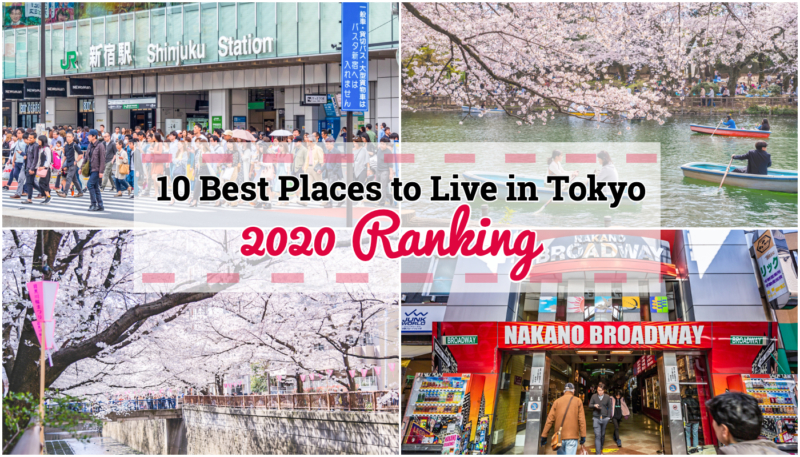Plan to move to Tokyo? Regardless of reason, one common problem you’re bound to face is not knowing which neighborhood to live in. In order to help you come to a decision, we’ve taken the results of a yearly Kanto neighborhood ranking by SUUMO—one of the country’s largest websites for real estate listings—and analyzed the top 10 neighborhoods in Tokyo to show you just what makes them so great.
Where Our Data Comes From

The data from this ranking comes from SUUMO.
SUUMO is one of Japan’s largest and most popular sites for real estate listings and rental properties. Every year, they release a series of rankings on the best places to live in specific regions across Japan.
In this article, we’ll be presenting the results of their Kanto neighborhood ranking for 2020 (Japanese only), which covers the prefectures of Tokyo, Kanagawa, Saitama, Chiba, and Ibaraki. More specifically, we’ll be focusing on the top 10 Tokyo neighborhoods. The ranking is based on the results gleaned from 7,000 users across an age range of 20 to 49.
If you’re looking to move to Tokyo and don’t know where to stay, these rankings can be a great way to narrow down your options. So, without further ado, let’s begin!
10. Nakano: A Deceptively Great Neighborhood
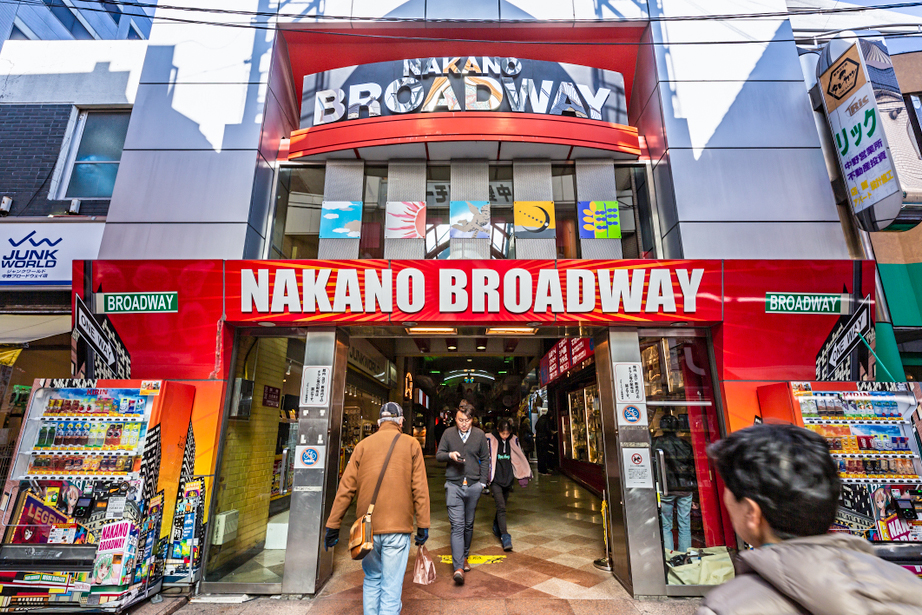
Average rent for a studio apartment: 95,000 yen/month
This neighborhood is most known for the Nakano Broadway, a large shopping complex where you’ll find all manner of specialty shops selling extremely niche goods. Although most people don’t take the time to explore outside of the nearby station area, Nakano is in fact a deceptively great place to live.
Since it’s a university area, despite the high average rent, you can find plenty of apartments at surprisingly affordable prices. Being a college town also means that there’s a wide variety of eateries offering delicious meals at reasonable prices. Although only two train lines pass through the station, both of them connect to all the main stations in Tokyo with, maximum, a single transfer, so Nakano is actually extremely accessible. For example, Shinjuku is just a 5-minute train ride away!

However, the bustling nightlife of this college town can pose a slight security risk (by Japanese standards). Unlike some of the other neighborhoods mentioned in this article, Nakano does not have many clubs or love hotels, but it does have a decent number of bars, so you can often see a lot of drunk people around the station at night. Also, there isn’t a lot of lighting in the residential areas at night, so it can be a little scary heading home at the end of the day. Despite these points, many people tote Nakano as a rather safe place to live, so as long as you are aware of your surroundings at night, you should do fine.
9. Tokyo: Super Convenient, But Expensive and Busy

Average rent for a studio apartment: 120,700 yen/month
You know you’ve made it in Japan if you live here. The neighborhood is home to a number of large department stores, old yet grand office buildings, and one of the largest train stations in all of Japan. It is a fantastic place to live in if you want easy access to almost any part of not just Tokyo, but all of Japan. With dozens of shops and eateries within the gigantic train station alone, your days will be filled with fun and excitement.
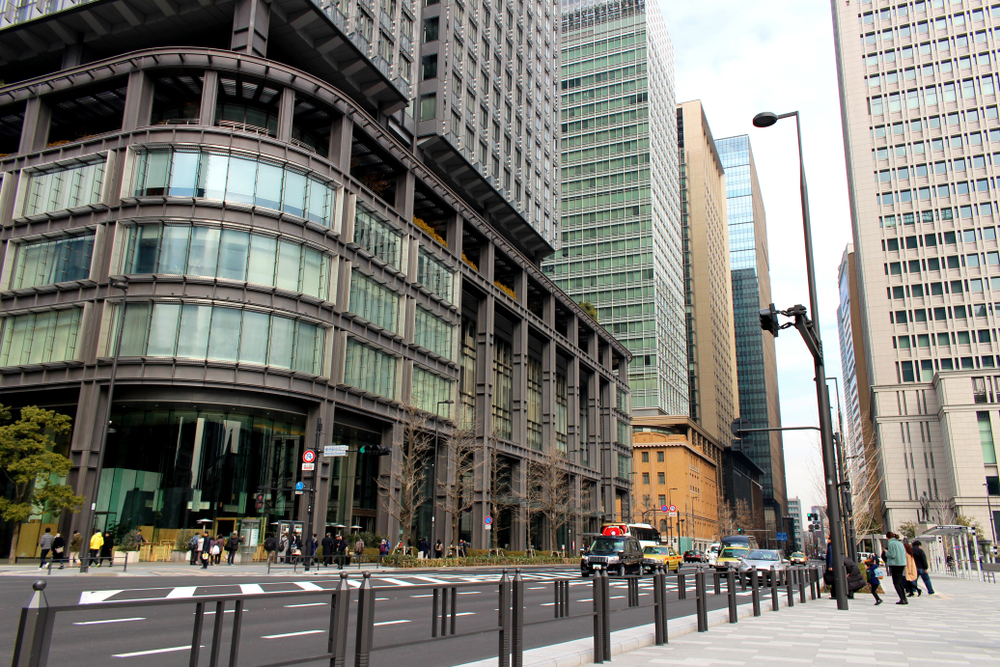
Of course, there’s plenty of downsides to living in a neighborhood like this. For starters, the rent is out-of-this-world expensive. You’ll find the general price of commodities to follow in the same vein. As it’s mainly a commercial district, you also won’t find a lot of traditional Japanese scenery or suburban sights here, which can be a dealbreaker for a lot of people.
8. Shibuya: Tokyo’s Playground for Japan’s Youth

Average rent for a studio apartment: 100,700 yen/month
Shibuya is the ultimate playground for the young residents of Tokyo, with a ton of shopping spots and restaurants gathered within it. It is perfect for anyone who likes to get out and have fun. You’ll find iconic tourist attractions such as the Hachiko Statue near the neighborhood’s center, as well as concert venues, love hotels, and all other kinds of fun venues. As Shibuya is one of the central stations of Tokyo, you can also expect quick and easy access to the rest of the city.

Sounds good? Well, like Tokyo Station, there are several points to take into consideration before deciding to live here. Rent is only a bit cheaper than Tokyo Station, so unless you earn a nice salary, you’ll be feeling quite cramped living here. The constant busyness of the neighborhood might make it more difficult to get some good sleep at night. Lastly, since Shibuya is a touristy neighborhood, if you happen to look “different” from the average Japanese person, you might have to be wary of people who target tourists.
7. Naka-Meguro: Tokyo’s Sakura Paradise

Average rent for a studio apartment: 110,000 yen/month
Despite ranking in seventh place, Naka-Meguro has always been one of the most coveted parts of Tokyo. It is a treasure trove of tiny cafes and shops, which make it busy on holidays. It is also especially popular in the spring, when tourists from all over the world gather to grab a glimpse of the iconic cherry blossom view that the trees lining the Meguro River offer. Outside of these times, however, it is peaceful and surprisingly quiet, and this balance of excitement and relaxation is what makes Naka-Meguro so popular.

All this popularity comes at a steep price. At 110,000 yen per month for a studio apartment, Naka-Meguro is actually more expensive than Shibuya while having less to offer in terms of shopping spots and other leisure facilities. It also doesn’t have the same convenience, with its train station hosting only two train lines: the Tokyo Metro Hibiya Line and the Tokyu Toyoko Line. Its premium reputation also means that even though it’s home to multiple small shopping streets, prices for everyday items are usually more expensive than elsewhere.
6. Ikebukuro: Paradise for Otaku in Tokyo

Average rent for a studio apartment: 84,000 yen/month
Finally, a neighborhood with an average rent below 100,000 yen per month! Ikebukuro is similar to Shibuya in that it is an amazing area for young people. It is full of shops, restaurants, and amusement facilities for all budgets, including the famous department store Sunshine City and at least two major arcade buildings within a 10-minute walk from the train station. It also has a stellar reputation as a paradise for fans of anime and manga. The main store of the nationwide anime and manga goods retail chain Animate is located here, and you’ll also find a plethora of secondhand anime goods and manga stores waiting for your patronage! Did we mention that the area is also extremely accessible, with eight train lines that depart from its train station?

Unfortunately, there are several reasons why this neighborhood isn’t for everyone. The biggest is its seedy reputation, especially when it gets dark. If you’re female, chances are relatively high for you to get catcalled or invited somewhere by men stationed by the train exits. Ikebukuro also has a lot of love hotels, clubs, and cabarets that are surprisingly near the station, staffed by people who stand outside hoping to help you part ways with your money. Aside from that, since Ikebukuro is busy at all times of the day, even at night, you might find the noise and people a bit too much to bear. Lastly, during rush hour, nearly all the trains at Ikebukuro Station will become incredibly crowded, so expect to (politely) fight your way in!
5. Shinjuku: Home to the World’s Busiest Train Station

Average rent for a studio apartment: 89,000 yen/month
With nine train lines connecting to Shinjuku Station, it’s no wonder that this is the busiest train station in not just Tokyo, but the entire world! Thousands of stores, restaurants, offices, and recreational facilities surround the train station, meaning that no matter what it is you’re looking for, you’ll no doubt find it here. Shinjuku also plays host to several tourist attractions, such as the slightly seedy Kabukicho area, the atmospheric bar street Golden Gai, and the futuristic Robot Restaurant.
So, what’s the catch? Quite honestly, Shinjuku is similar to Shibuya and Ikebukuro in that it can be a little sketchy at night or in the wrong places and it can be hard to relax here. There also aren’t many residential areas near the train station, so unless you have a lot of cash to burn or don’t mind living in tight quarters, it can be difficult to find nice and convenient accommodation.

But if it’s so similar, why is Shinjuku higher on the list? Well, for starters, it’s safer than Ikebukuro. There are love hotels, clubs, and other seedy establishments in the area, but they are concentrated into specific parts of the neighborhood, so as long as you avoid those, you should be relatively safe. It’s also significantly cheaper than Shibuya while offering the same amount of activities and convenience! Lastly, it contains Shinjuku Gyoen National Garden, a rather large park with lovely nature scenery and plenty of space for a picnic.
4. Shinagawa: Safe and Family-Friendly
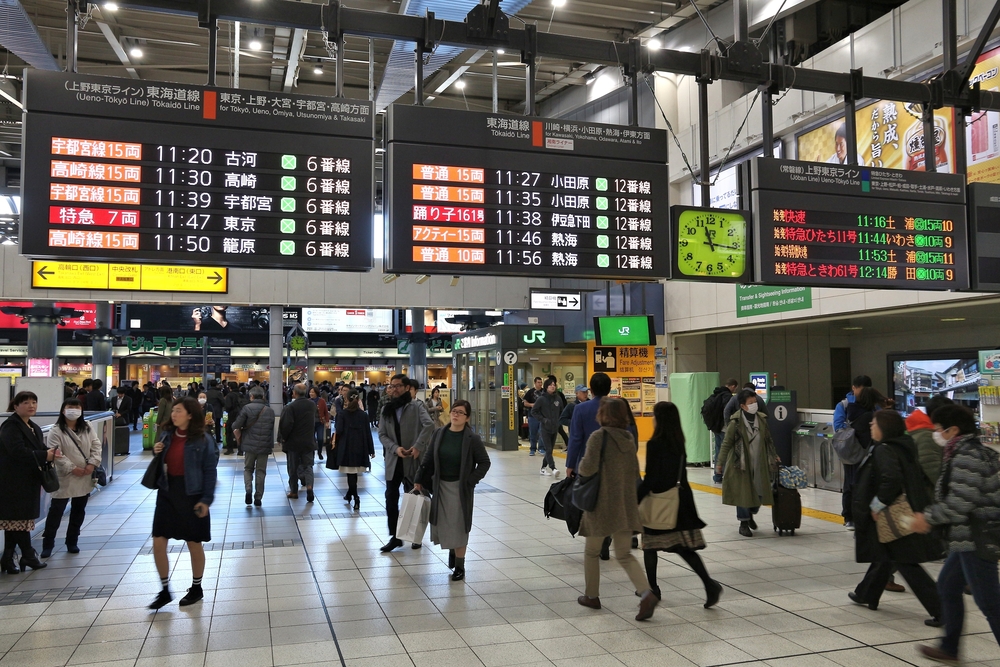
Average rent for a studio apartment: 98,000 yen/month
Shinagawa Station is an incredibly accessible train station, connected to a total of seven different train lines. Although the station area is awfully busy, outside it is actually not that crowded. This makes it a great place for those with children or who want to live in a quieter neighborhood.
You’ll find plenty of useful public facilities here, such as a gym and library, as well as many parks and a great ocean view. If you have a family, there are even plenty of larger accommodations available at reasonable prices, and the schools in the area have a decent reputation. Lastly, it’s actually one of the safest neighborhoods in this ranking, so it’s a great option for both women and families.

The main problem with living here is the relatively expensive rent. Also, there’s a lot to do in the area, but it still pales in comparison to Shinjuku, Shibuya, or Ikebukuro. However, if you prefer a less busy area to live in that’s still incredibly convenient, then maybe these two problems aren’t that big of an issue.
3. Meguro: The More Convenient Part of the Meguro Area

Average rent for a studio apartment: 109,000 yen/month
If you like the idea of regularly visiting Naka-Meguro but you’re not 100% happy with its accessibility, Meguro is perhaps the best place for you. Not only is it extremely close to Naka-Meguro Station and all the gorgeous scenery that comes with it, but it is also far more convenient, with a total of four train lines—including the JR Yamanote Line—passing through it. Near the station, you will find a wealth of shopping facilities, restaurants, karaoke chain stores, and so on. Even at night, this area is bustling with people.
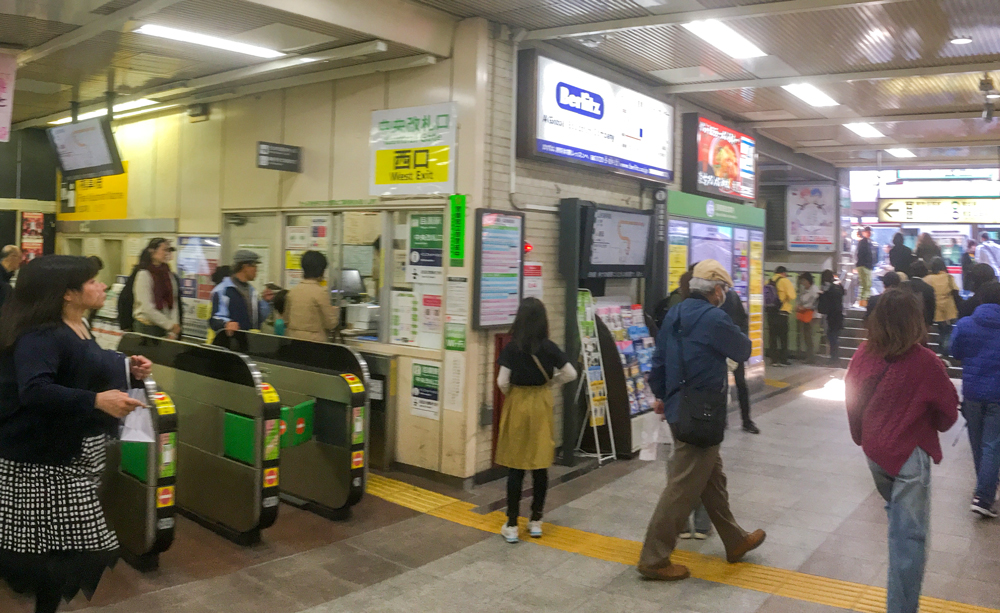
If you think that Meguro’s convenience makes it busy at all times of the day, you’d be half right and half wrong. Near the station, yes, it does get busy, especially at night. However, it’s significantly quieter outside of the train station area, with fewer shopping establishments and restaurants compared to similar neighborhoods like Shibuya and Shinjuku. This may sound like a good thing, but these areas also have more hilly terrain, which is a downside for many Japanese. Add in the relatively more expensive rent compared to more bustling neighborhoods like Shinjuku and Shibuya as well as the fact that there are not many budget shops in the area, and it becomes harder to figure out just how good the area really is.
2. Kichijoji: Formerly the No. 1 Place to Live in Tokyo

Average rent for a studio apartment: 88,000 yen/month
For many years, Kichijoji has ranked as the top neighborhood to live in Tokyo. It is home to a thriving shopping street full of stylish eateries as well as a plethora of stores. And, unlike many other neighborhoods mentioned in this article, it is also full of greenery. One of Tokyo’s best and most famous parks, Inokashira Park, is just a couple of minutes’ walk from the station and provides a nice lakeside view along with all kinds of plantlife. Best of all, its train station is well connected to multiple lines, enabling you to travel to most of the big train stations in Tokyo without needing to transfer trains!

Unfortunately, its popularity could also be the reason for its slight decline in this year’s ranking. More and more people have been visiting Kichijoji since it started ranking as Tokyo’s top place to live, and because of this, the area has now become extremely busy, especially on weekends.
1. Ebisu: Join the Ranks of Japan’s Celebrities

Average rent for a studio apartment: 112,000 yen/month
Over the past couple of years, Ebisu has slowly risen to the top ranks of Tokyo’s most coveted neighborhoods to live in. It’s considered an upper class neighborhood, with many celebrities residing here. Not only will you find a ton of eateries and shopping spots, but Ebisu itself is also incredibly convenient. It is connected to five different train lines which can take you to all of Tokyo’s major train stations in less than 30 minutes without needing to transfer at all! It’s basically just as convenient as Tokyo Station, but with slightly more greenery.

This convenience unfortunately means that the train station and trains can get incredibly packed, especially during rush hours. Another downside is that grocery prices are expensive, so you might end up spending more than you really want to on food.
Did the 2020 Rankings Surprise You?
Moving can be a pain, especially if you don’t know where to start. Hopefully this summary of SUUMO’s 2020 rankings has given you a better understanding of the top neighborhoods in Tokyo. Everyone’s needs and preferences are different, so everything in this article should be taken with a pinch of salt, but we hope the knowledge gained from reading this article helps you come to a better, more informed decision!
With Japan Property, one of Japan’s leading property portal websites, you can take a look at some great properties to buy or rent in these popular areas of Tokyo!
If you want to give feedback on any of our articles, you have an idea that you’d really like to see come to life, or you just have a question on Japan, hit us up on our Facebook!
The information in this article is accurate at the time of publication.
